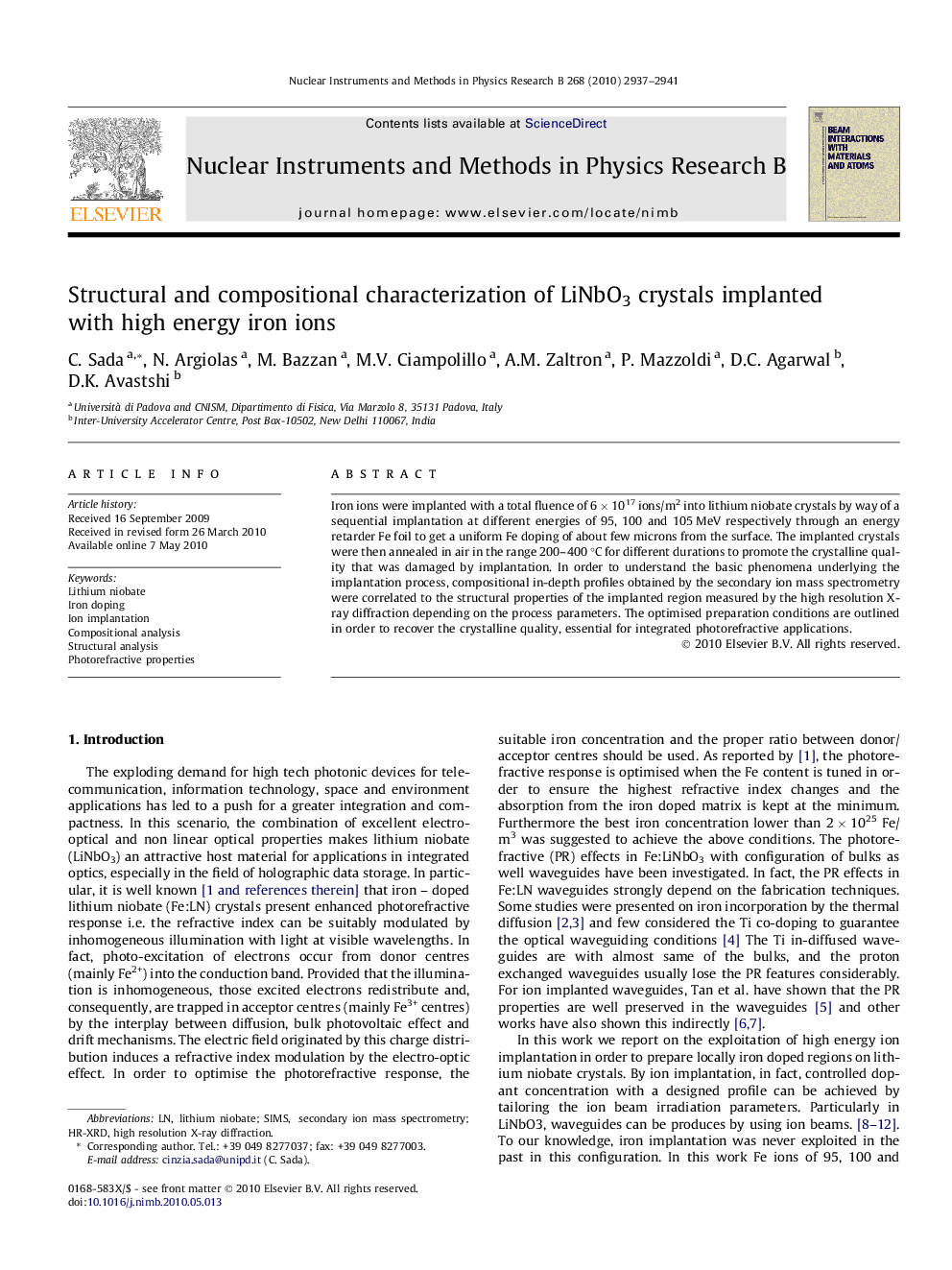| Article ID | Journal | Published Year | Pages | File Type |
|---|---|---|---|---|
| 1681370 | Nuclear Instruments and Methods in Physics Research Section B: Beam Interactions with Materials and Atoms | 2010 | 5 Pages |
Iron ions were implanted with a total fluence of 6 × 1017 ions/m2 into lithium niobate crystals by way of a sequential implantation at different energies of 95, 100 and 105 MeV respectively through an energy retarder Fe foil to get a uniform Fe doping of about few microns from the surface. The implanted crystals were then annealed in air in the range 200–400 °C for different durations to promote the crystalline quality that was damaged by implantation. In order to understand the basic phenomena underlying the implantation process, compositional in-depth profiles obtained by the secondary ion mass spectrometry were correlated to the structural properties of the implanted region measured by the high resolution X-ray diffraction depending on the process parameters. The optimised preparation conditions are outlined in order to recover the crystalline quality, essential for integrated photorefractive applications.
